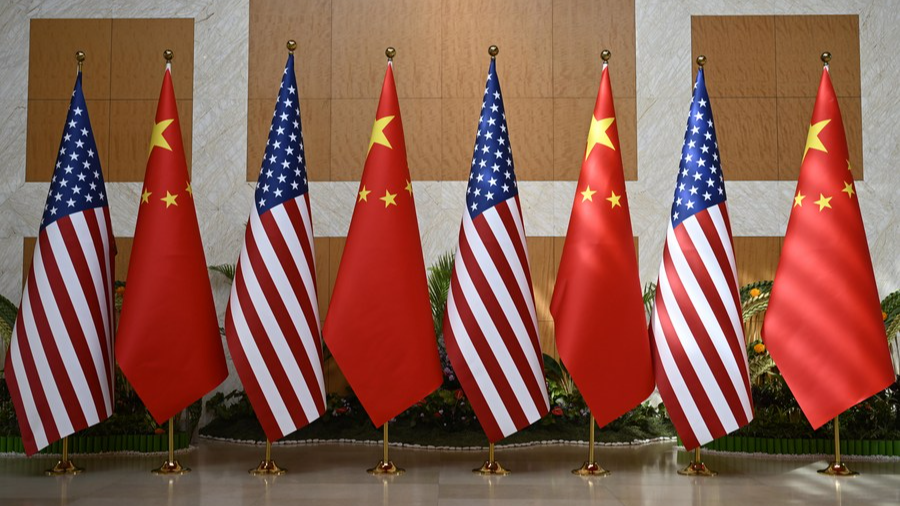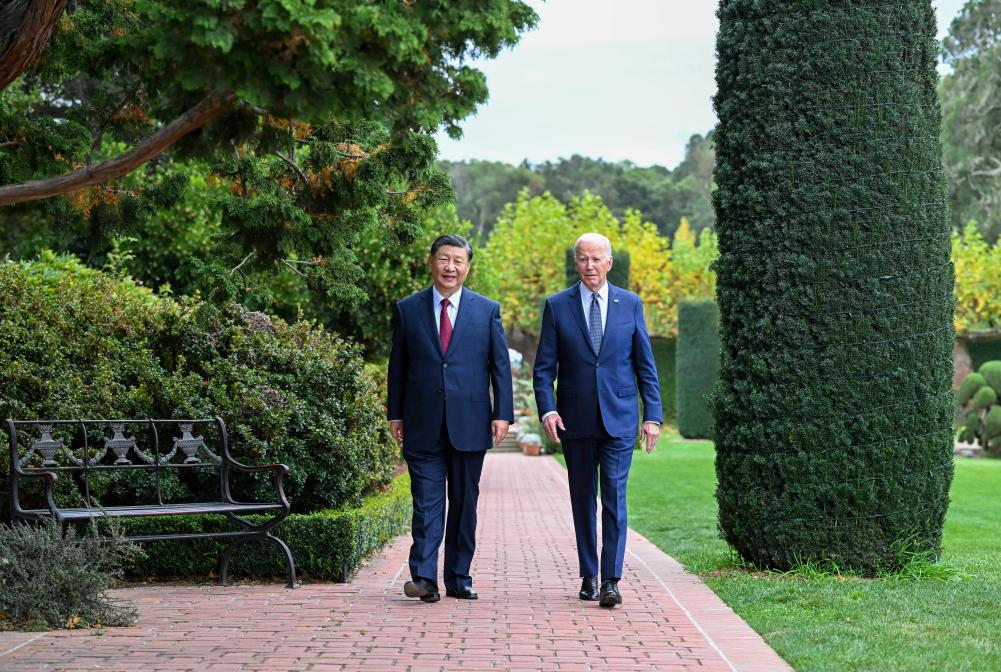By Imran Khalid

The national flags of China and the United States in Bali, Indonesia, November 14, 2022. [Photo/Xinhua]
The dawn of 2024 witnessed a subtle yet significant exchange of goodwill between two global superpowers: China and the United States. As Chinese President Xi Jinping and his U.S. counterpart Joe Biden extended their New Year greetings and exchanged congratulatory messages to commemorate the 45th anniversary of their official ties, the nuances and implications of their words will reverberate far beyond mere ceremonial niceties.
Historically, the narrative of China-U.S. relations is one of oscillation – swinging between cooperation and confrontation. The recent exchange, coming on the heels of a notably strained period, signals mutual acknowledgment of the importance of their relationship, not just for bilateral interests but for global stability at large. The backdrop against which this exchange occurred is crucial.
The trajectory of China-U.S. relations had witnessed a dip following U.S. House Speaker Nancy Pelosi’s contentious visit to the Taiwan region last year. Beijing's consequent curtailing of communication channels was more than just a diplomatic rebuke; it was a reflection of the Chinese mainland's profound concerns about Taiwan. However, the Xi-Biden meeting in San Francisco last November laid the groundwork for mending frayed ties. The agreement to reinstate communication channels, especially in crucial sectors like climate change, drug control, and military dialogues, signified a mutual recognition of shared challenges and the imperative to collaborate.
In his congratulatory message, President Xi conveyed a strong interest in steering the expansive waters of China-U.S. relations towards shared benefits and global harmony. Xi's letter to Biden, referencing the "San Francisco vision," explains China's perspective on the roadmap ahead. The emphasis on mutual respect, peaceful coexistence, and cooperation echoes a sentiment that, while differences will persist, they should be navigated with maturity and foresight.
Xi underscored to Biden the monumental importance of China-U.S. diplomatic relations, positioning their inception as crucial not only for their nations but also for global dynamics. The positive aspect is that Biden's response, while reciprocating Xi's optimistic narrative, also acknowledged the historical strides made since 1979 and reiterated America's commitment to a stable and constructive relationship. His acknowledgment of past dialogues and progress signals positivity.
Beijing's overtures for improved ties have been consistent, reflecting China's yearning for stability and collaboration. Yet, the China-U.S. dynamic is not merely a bilateral affair. As two major global players, their engagements extend beyond mere bilateral exchanges, influencing the global power equation. The tensions in the South China Sea and the Taiwan question serve as poignant reminders of the potential pitfalls that lie ahead.
While China has been consistently advocating for a relationship devoid of a zero-sum competition, the onus lies on the U.S. to reciprocate with genuine goodwill. In the intricate dance of geopolitics, China and the U.S. stand as pivotal partners and competitors. While divergences are inevitable, their coalescence on global issues remains paramount.

Chinese President Xi Jinping and U.S. President Joe Biden take a walk after their talks in the Filoli Estate in the U.S. state of California, November 15, 2023. [Photo/Xinhua]
As the New Year unfolds, a recalibration in their bilateral ties beckons. The challenge lies not in erasing differences but in crafting a framework where disagreements coexist with collaboration. By adopting a forward-looking approach, both sides can harness their collective strengths, ushering in an era of mutual respect and shared prosperity.
It is not just about managing differences; it is about leveraging them to forge a more resilient and cooperative global order. The diplomatic exchanges between Xi and Biden at the start of 2024 offer a prism to assess the evolving contours of global politics.
While challenges persist, the undercurrent is one of cautious optimism. Both China and the U.S., recognizing the stakes involved, appear to be moving towards a relationship defined by cooperation rather than confrontation. Amidst global disruptions and regional tensions, China-U.S. trade resilience persists. With evolving global supply chains, China's steadfast role as an industrial linchpin ensures continuity for American consumers and European markets alike.
While political rhetoric might occasionally cloud the horizon, pragmatic interests continually pull both nations towards a cooperative stance. This interdependence, rooted in mutual economic benefit, offers a glimmer of stability in an otherwise turbulent geopolitical landscape. China and the U.S. find themselves at a pivotal crossroads.
Amidst the cacophony of disagreements and divergences, lies a harmonious note: economic collaboration. For the U.S., the allure of the vast Chinese market, underscored by its robust economic stability and stringent intellectual property protections, is undeniable. American enterprises, in their quest for growth, recognize the value of integrating with China's dynamic economic landscape.
Similarly, China stands to gain from the technological prowess and innovative spirit of American businesses. By fostering a symbiotic relationship, both nations can navigate the complexities of the modern world, setting aside differences for mutual prosperity.
The resilience of China-U.S. relations, despite external pressures, underscores a shared commitment to mutual growth. As both nations confront challenges, from climate change to technological innovation, the imperative for collaboration becomes even more pronounced. Thus, while the road ahead may feature its share of bumps and detours, the overarching narrative remains one of partnership and progress.
The author is a special commentator on current affairs for CGTN.

 中文
中文



